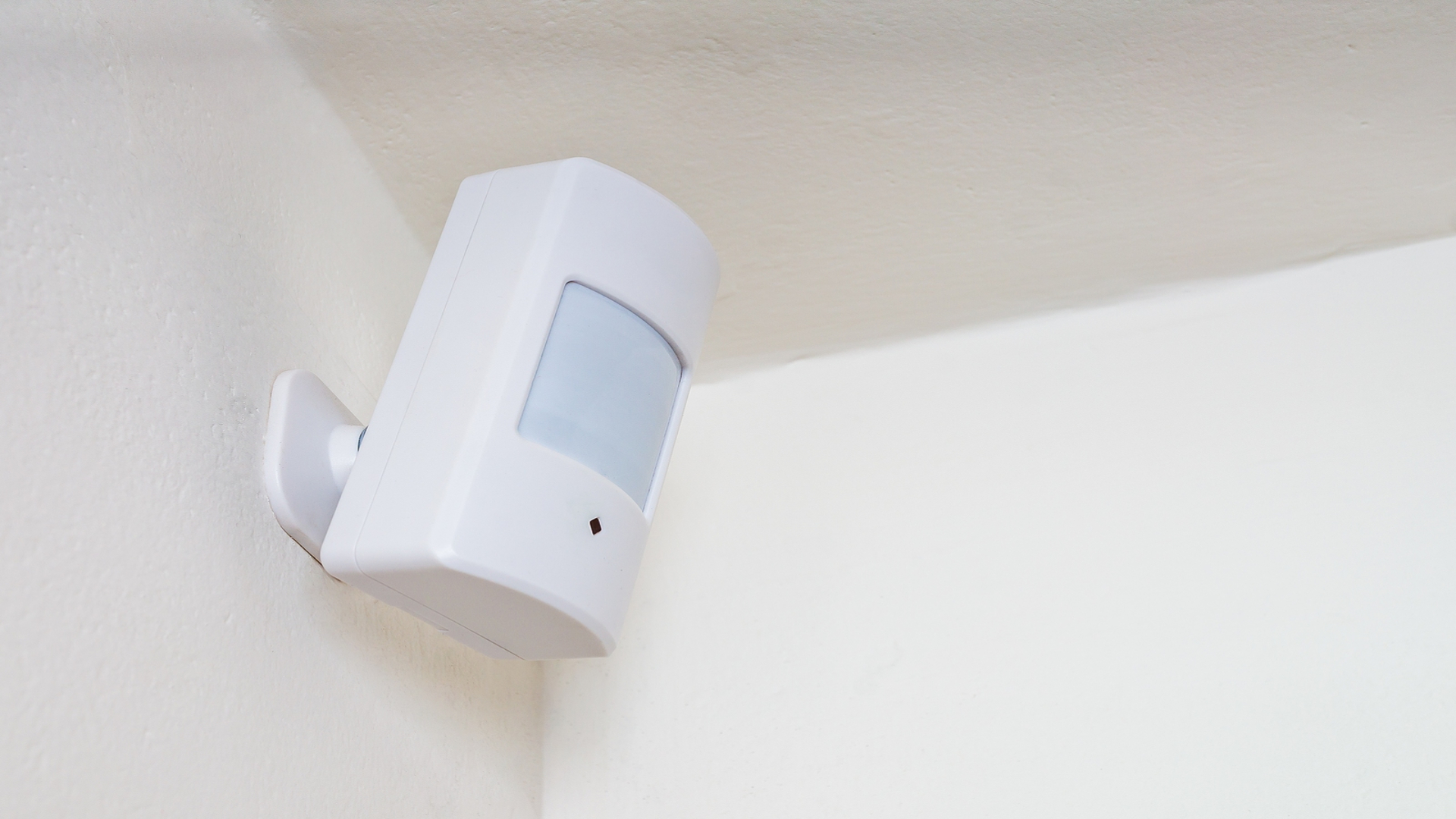
Motion sensors for business security: A guide
A motion sensor, or motion detector, is an electronic device that uses a sensor to detect nearby people or objects. Motion sensors are an important component of any security system. When a sensor detects motion, it will send an alert to your security system, and with newer systems, right to your mobile phone. If you have subscribed to an alarm monitoring service, motion sensors can even be configured to send an alert to your monitoring team.
Motion sensors are commonly used to:
- Detect when a potential intruder is near to or inside your home or business.
- Alert you if people enter restricted areas. At home, this might be the basement or garage.
- Save energy by powering lights in an area only when needed.
There are two widely used types of motion sensors: active ultrasonic and passive infrared (PIR).
Active ultrasonic sensors and passive infrared sensors are the two most common motion sensor technologies, both of which are known for their accuracy and reliability.
Active ultrasonic sensors emit ultrasonic sound waves at a frequency above the range of human hearing. These waves bounce off objects in the immediate vicinity and return to the motion sensor. A transducer within the sensor acts as a waypoint for the signal—it sends the pulse and receives the echo. The sensor determines the distance between itself and the target by measuring the time between sending and receiving the signal. Most motion sensors allow you to configure sensitivity, meaning it won’t trigger if the distance to the object is too far. If the signal received is within specified parameters, the motion sensor will trigger, alerting you that someone or something is near the sensor.
Motion sensors installed at entry points such as windows and doors can be configured to trigger the burglar alarm. Door and window sensors are installed specifically to detect an intruder, so you shouldn’t have to deal with false alarms or excessive notifications.
Ultrasonic sensors can detect objects regardless of their color, surface type, or material type (i.e., metallic vs. non-metallic). They can even detect translucent objects, though this is usually reserved for industrial applications.
Passive infrared sensors detect fluctuations in infrared energy, which humans, animals, and objects release as heat.
PIR sensors are a bit more complex than active ultrasonic sensors, but the result is the same.
Walls, floors, stairways, windows, cars, dogs, trees, people—you name it—radiate some amount of heat. Infrared waves can detect temperature. Infrared motion sensors detect the presence of a person or object by detecting the change in temperature of a given area.
Let’s use a motion detection camera to illustrate how this works, though any PIR motion sensor works the same.
There are two sensors within a PIR camera. When no one is around, the PIR camera detects ambient IR radiating from background objects like walls and doors. When a human (or animal, object, etc.) moves past the camera, the first sensor intercepts their heat signature, causing the camera to activate, which triggers your alarm and sends you an alert. If the object happens to leave the view of the camera, the second sensor will activate, noting the sudden drop in temperature.
A PIR motion sensor uses these temperature changes to detect the presence of a person or object. Like active ultrasonic sensors, PIR sensors can be set to ignore small changes in IR, so you can walk around your home or business without setting off alarms all day and night.
There are a handful of less commonly used motion sensor technologies.
Tomographic motion sensors are made up of multiple nodes. The nodes link together, forming a mesh network. These sensors detect the presence of a person or object when the link between two nodes is broken.
Vibration motion sensors detect people and objects via small vibrations caused by things like footsteps.
Microwave motion sensors emit microwave pulses. Much like an active ultrasonic sensor, the microwaves bounce off objects and return to the sensor. They actually cover a larger area than PIR sensors, but are more susceptible to electronic interference.
Some motion sensors are considered “dual technology,” in that they combine two sensor types in one system. Active ultrasonic sensors and PIR sensors are often combined into one unit with the goal of increasing detection accuracy. You can always talk with your alarm installer to make sure your motion sensors are the most suitable options for your home or business.
Motion sensors have a limited range. Work with a professional to determine where best to install them to maximize your security coverage.
Typical motion sensors have a range of up to 80 feet, meaning a single motion sensor probably won’t cover a long hallway or an open workspace. You can hire a security company like Bay Alarm to install your security system. Our installers will review the layout of your space to determine where exactly to place motion sensors. As with security cameras, fire alarms, and burglar alarm installations, our goal is to ensure your home or business is as secure as possible, with devices and components placed in the most strategic locations.
Once installed, a security agent will integrate the sensors with your burglar alarm system. You’ll have quick access to your entire security system from your phone using one of two apps: SureHome by Bay Alarm or Bay Alarm Access.
If you decide to go the DIY security route, be sure to follow the instructions included with the sensor. Here are a few tips for installing motion sensors at your home or business:
- Install sensors near entry points. You can buy motion detectors designed specifically for doors and windows.
- Place them in high-traffic areas. You’re more likely to catch an intruder if you install the sensor in a hallway or stairwell, or another location people must walk through. It’s also wise to place sensors near rooms with especially valuable items where thieves may go first.
- Don’t install PIR sensors near a heat source. PIR sensors analyze the fluctuations in temperature of a given area and can trigger a false alarm if they are installed too close to a vent, furnace, or fireplace.
- Don’t block the sensor. The sensors won’t work properly if obstructed. An obstruction may not be obvious at first. For instance, if you’re installing a motion sensor light on your house above your driveway, your parked car may obstruct its ability to detect motion on the sidewalk or in the street. Try to install the sensor in a spot where the surrounding area is clear.
Wipe the sensor free of any dust or debris after you finish installing to ensure an unobstructed lens, and be sure to clean them periodically thereafter.
Note: DIYers! Z-Wave enabled smart motion sensors connect to your phone for quick access and immediate notifications. Whether you’re just starting your smart home build, or you already have dozens of connected devices, Z-Wave enabled motion sensors are a worthy addition to your setup. (If you are not familiar with Z-Wave technology, we previously published an in-depth article discussing what Z-Wave technology is and how it works).
Configure the sensor’s sensitivity settings, so you aren’t bombarded with alerts and alarms.
You probably don’t want your phone blown up with motion notifications only to find out it was just the family pet walking across the room. One of our security professionals can configure the detector’s notification settings to your liking.
If it’s a DIY install, you will have to adjust the settings yourself. Refer to your motion sensor’s instructions. In all likelihood, it comes with an app. Once you download the app you can change the settings to be more or less sensitive.
Still haven’t purchased your motion sensors? Do some research about the types of settings and features different sensors offer. Some are more of a “set-it-and-forget-it” type sensor with minimal settings, while other sensors are full of features that you might spend a good amount of time configuring. Go with the one that best fits you—or talk to a pro at Bay Alarm to learn more.
Motion sensors are an essential part of any security system: they represent one of the best ways to detect intruders and other suspicious activity. If you’re ready to increase the security of your home or business, give us a call! At Bay Alarm, we’ve been protecting people just like you for over 75 years.

